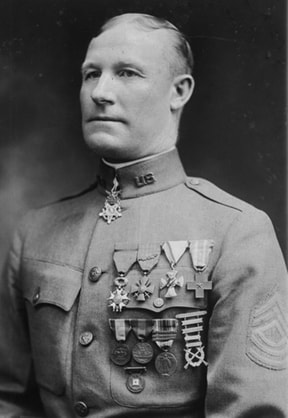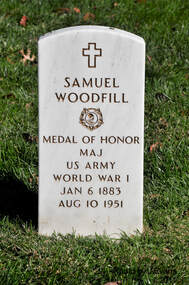 Some days, we just need a little chocolate. These days, people are hunkering down and are rediscovering how to survive. Instead of eating out every night and going to gyms, they are baking their own bread and planting gardens. I think it is wonderful people are learning how to become more self-reliant. However, I also recognize (because I also feel it at times) people are under a great deal of stress these days. Sometimes, only a good dose of chocolate will get us through. Therefore, I decided to share one of my favorite chocolate dessert recipes this week. Brownie Pudding is easy to make, and produces an ooey, gooey, chocolatey dessert which will have you scraping the bowl. If you have any ice cream or whipped cream to plop on top when you serve it, even better. Enjoy! Brownie Pudding Ingredients 1 cup all-purpose flour ½ cup sugar 1/4 cup unsweetened baking cocoa 2 tsp baking powder ¼ tsp salt ½ cup milk 2 Tbsp butter, melted 1 tsp vanilla ½ cup semisweet chocolate chips ½ cup firmly packed brown sugar another 1/4 cup unsweetened baking cocoa 1 ¾ cups boiling water Directions Preheat oven to 350o. Combine the first five ingredients in a bowl. Stir in the milk, melted butter and vanilla until smooth. Stir in the chocolate chips. Spread mixture in an ungreased shallow 1 ½ quart casserole dish. Sprinkle the brown sugar and remaining ¼ cup baking cocoa on top. Pour the boiling water over everything. Place dish in oven and bake 35 minutes. Remove and allow to cool for 10 minutes before serving. Serve warm with ice cream or whipped cream. Yield: 6 servings.
1 Comment
 In these days of social distancing, we are all getting a bit more creative about how we stay in touch with the people we love. For me, it feels especially important to find ways to keep close contact with our granddaughters. After all, we moved halfway across the country to be close to them, and they got used to seeing us frequently. Lately, I know it is difficult for the girls to understand why Grandma and Grandpa don’t visit them anymore. We periodically drop off games or books for them on their porch, but it isn’t the same thing. And when we try to video chat with them, it only confuses and frustrates the younger one. Luckily, my son and his wife have found clever ways to help us stay in touch with our granddaughters. Last week, we had a “social distancing dinner” outside. My son’s back yard is fenced, with the garage and driveway outside the fence. So they set up two tables, one inside the fence for the four of them, and one on the driveway for my husband and I. We each had our own food, so weren’t sharing anything, but we were still able to eat together and talk together, with the fence keeping the girls from getting too close to us. We hadn’t seen each other for weeks, so it was wonderful to see all of them in person, even at a slight distance. (And luckily, the weather cooperated by being sunny and warm enough. Unlike this week.) This week, we are trying something new. My husband and I received an invitation from them for a “virtual tea party.” We are going to dress up on Sunday and have a tea party with them via video conferencing. We’ll each make something suitable to snack on with tea ahead of time, and we’ll have “tea” together. I’m a little worried that that younger girl will still be confused and upset, but hopefully the novelty of the tea party will get her past that. I know they like having pretend tea parties when they are at our house, so I’m sure they (and we) will enjoy the real thing. Hopefully, we won’t all have to find creative solutions like this for much longer. While I am constantly amazed by the ingenuity and innovation the pandemic has brought out in people, I am looking forward to the day we can all return to normal. In the meantime, if anyone has any additional suggestions for how we can stay in touch with our granddaughters, I would love to hear them.  I love serendipity when it occurs. It happened for me yesterday, as a happy, unexpected consequence of the current need to stay at home. It happened during a phone call with my mom. I had called to check in with her, and casually mentioned I was doing some research on WWI. She perked up and asked, “Well, did you know you have a relative who was awarded the Medal of Honor during WWI?” It was a family story she had forgotten about, until her local “stay at home” order had her spending more time sorting through boxes of old papers and documents. The other day, she found an article about her mother’s cousin, Samuel Woodfill. Samuel Woodfill was the most decorated soldier in WWI. General Pershing called him the “greatest single hero” of the war. In addition to the Medal of Honor, he was awarded France’s Croix de Guerre as well as their Legion d’Honneur, Italy’s Meriot di Guerra, and the Order of Leopold from Belgium. He was so well-respected that two years after the war ended, Poland presented him with two more medals. Samuel grew up on a farm in southern Indiana and became an excellent woodsman and marksman, skills which served him well later in life. He was eager to follow in his father’s footsteps and join the Army. He tried to enlist during the Spanish American War, but was turned away because he was only 15 years old. Samuel was finally able to enlist in 1901 when he was 18. He served in a variety of locations, including the Philippines, Alaska and the border with Mexico before WWI.  However, it was his service in France which cemented his place in the history books. On October 12, 1918, during the Meuse-Argonne Offensive, he single-handedly captured three German machine gun nests, using his rifle and then his pistol, and then a pick axe to eliminate many enemy soldiers. By this point, he was also suffering from the mustard gas he breathed in during the fighting. He spent ten weeks in a hospital recovering. (According to lore, he first retrieved the pack he had abandoned when the fighting started, and was upset to discover that some “yellow-bellied son of a sea cook” had stolen a jar of strawberry jam out of his pack.) Samuel retired from the Army with a small pension in 1923. Although Samuel was a modest man and tried to live quietly, he was not forgotten. In 1921, General Pershing selected him to be one of the Body Bearers for the Unknown Soldier when the soldier was entombed. When the U.S. entered WWII, Samuel (along with Alvin York, another Medal of Honor winner) was asked to serve again. Although Samuel was 59 at this point, he was still an excellent marksman and served as an instructor. He died in 1951 and is buried in Arlington Cemetery near General Pershing. It is hard to describe how I felt when I heard about this amazing relative. The more I learn about my own family’s participation in WWI, the more connected I feel to the story I am working on now. I am so glad I happened to call my mother when I did. It is humbling to read what men like Samuel endured, and I feel honored to share their story and to hold them up as the heroes they were. |
AuthorI write historical fiction, and I invite you to share the journey to published author with me. Archives
December 2022
Categories |
 RSS Feed
RSS Feed
